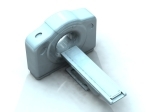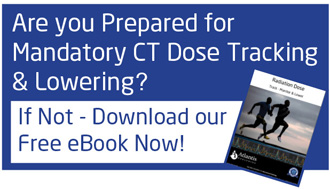A team of radiologists at Stony Brook University in New York wanted to find the most simple and cost-effective way to monitor CT dose given what technology is available today. In doing so, they ended up developing a web-based service that does everything other solutions on the market do, just in a simpler fashion. They wrote about what they found, and what they have developed, in the September issue of the Journal of the American College of Radiology.
 "We wanted to improve the transparency of what's available," Dr. Ronak Talati, lead author of the paper and a radiologist and software coder at Stony Brook, told DOTmed News.
"We wanted to improve the transparency of what's available," Dr. Ronak Talati, lead author of the paper and a radiologist and software coder at Stony Brook, told DOTmed News.
Tracking dose is becoming more important than ever. Not only is the public more aware of it, but proposals related to quality in the Centers for Medicare and Medicaid Services'(CMS) 2014 Medicare Physician Fee Schedule rule include new measure groups for CT dose tracking. Specifically, these include recording and storing CT radiation dose for patients, as well as reporting it to a radiation dose registry.
Such requirements are already mandatory in some states like Texas and California.
In some respects, tracking dose is easier today than ever because of the plethora of tools available. But Talati and his team at Stony Brook thought there was room for improvement. Their solution is a cloud-based platform called Scannerside. Because it's a web service, it takes away the barrier of being vendor or institution-specific, in addition to getting rid of the need for software installation or RIS/PACS integration.
"We took the OCR [optical character recognition] algorithm and put it into a parallel processing cloud setup so it's not something that has to live in your institution and be updated constantly," said Talati.
Scannerside also gives the technician real-time feedback with the ability to adjust protocols. Dose is processed on the spot and a dose card can be printed for the patient with information about delivered and cumulative patient dose.
The product can provide dose tracking for angiography procedures as well. Already one state, Texas, requires that angiography dose be monitored as well.
"That stuff [angiography dose] is kind of in future. Right now it's about CT. And I suspect when the government has a chance to be more stringent they usually go through with it." said Talati.
by Loren Bonner , DOTmed News Online Editor
Some Blogs you might have missed:
- Trends: Managing and Reducing CT Radiation Doses
- A Successful Dose Management Strategy Takes Teamwork
- Q & A: How One Practice Achieved Extreme Low Dose
- Mobile CT brings low-dose lung cancer screening to underserved




